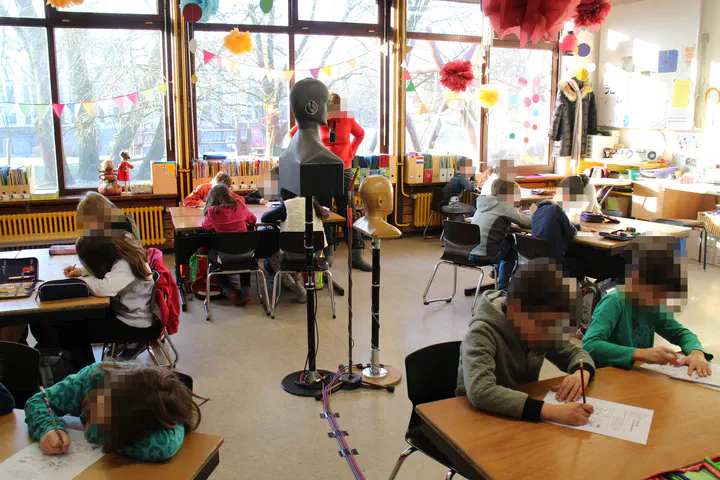Toward Child-Appropriate Acoustic Measurement Methods in Primary Schools and Daycare Centers
 In-situ measurement setup in a classroom. Figure from Loh et al. (2022)
In-situ measurement setup in a classroom. Figure from Loh et al. (2022)
Abstract
Children spend a considerable amount of time in educational institutions, where they are constantly exposed to noisy sound environments, which has detrimental effects on children’s health and cognitive development. Extensive room acoustics measurements and long-term in-situ measurements in such institutions are scarce and are generally conducted using omnidirectional microphones. This study provides preliminary results of room acoustics in unoccupied conditions and in-situ noise measurements during occupancy, in classrooms and playrooms in Germany using an omnidirectional microphone, an adult HATS (head and torso simulator), and a child HATS. The results indicate that room acoustics of most of the sampled rooms need improvement (mid-frequency reverberation time, T30 (s) = 0.6 (0.3–1.1) and clarity index, C50 (dB) = 6.1 (1.6–10.4); speech transmission index (STI) = 0.7 (0.6–0.8); mean values and range); the sound pressure level (SPL) during activities was around 66 dB (A-weighted equivalent level SPL) in both classrooms and playrooms using omnidirectional measurements, which is somewhat lower than similar measurements in other countries that varied in measurement periods; psychoacoustics parameters relating to sound fluctuation (fluctuation strength and roughness) show variation with increasing room volumes; and that there may be some benefit in considering child HATS for in-situ noise measurements. While the validity of these results in relation to children’s perceptual evaluation (using questionnaires, etc.) is subject to future investigations, the results highlight some of the nuances in the choice of transducers in measurements with children and potential benefits of psychoacoustic parameters in complementing the SPL-based parameters in more comprehensively characterizing the noise environments in educational institutions.